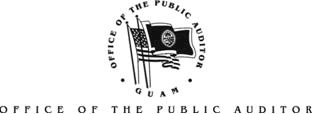
FY 2003 Financial Highlights
July 6, 2004
Despite the budgetary and financial challenges posed by the Guam economy and the government-wide financial problems in 2003, UOG ended the year with a stronger financial position in comparison with the previous year. According to the FY 2003 University of Guam (UOG) financial statements audited by Deloitte & Touche LLP, UOG increased its net assets to $2.5 million due mainly to a $2 million increase in federal grants and contracts revenues and its efforts to reduce operational costs. Net assets grew from $73.7 million in 2002 to $76.2 million in 2003. This is an improvement of nearly $4 million from FY 2002’s $1.2 million decrease in net assets.
UOG generated $33 million in revenues from its operations, a $3.2 million improvement from the prior year’s revenues. Additionally, UOG realized $1.4 million in investment income, an improvement from prior year’s $1 million loss. The Government of Guam appropriation constitutes 47% of the operational funding needs of the university. This was an improvement from prior year, which was 51%.
Further analysis of the operating expenses revealed that UOG was able to reduce salary expenses by $2 million. Expenses for benefits, however, increased by $400,000. This condition was brought about by higher health care premiums and a legislative change in UOG’s share of retirement contributions; factors beyond UOG’s control. Overall, UOG was able to better manage its resources and reduce overall operational costs by $700,000.
UOG’s Single Audit (compliance and internal control) reports recorded four findings, all of which has been addressed by UOG. One of them revealed a failure to segregate incompatible duties involving federal funds for student financial aid. Another finding involved vendor advances outstanding for more than a year. UOG was also cited for failing to monitor and enforce policies on outstanding travel advances. Travel advances remained outstanding for more than 91 days and their amounts escalated from $4,742 in 2002 to $62,000 in 2003. Although this condition did not effect the financial statements, from a compliance and control perspective, the significant increase in travel advances is troubling.
Relative to an Energy Conservation Project that was abandoned in FY 2001, UOG continues to pursue the recovery of public funds related to the project. Recently, the Supreme Court of Guam affirmed the dismissal of a counterclaim by the project’s contractor. Meanwhile, the University continues to honor its long-term lease agreement by paying $14,460 per month ($173,520 per year).